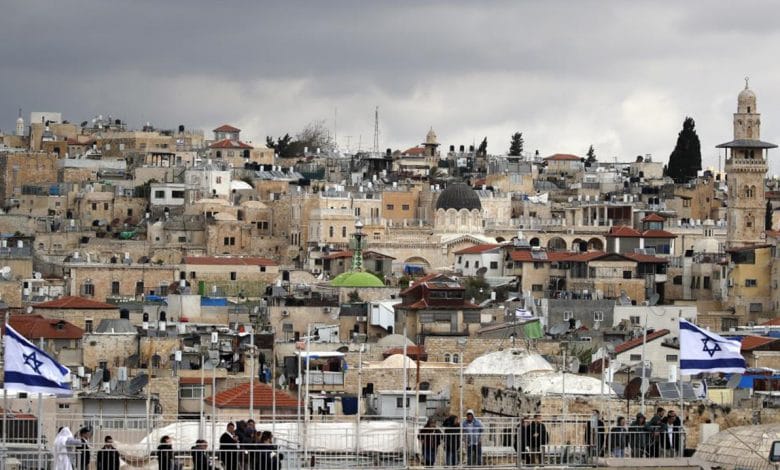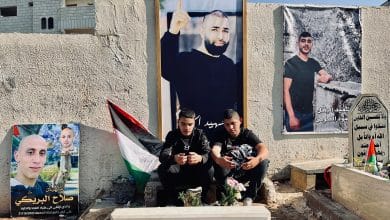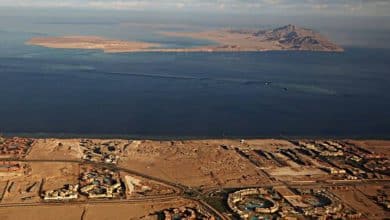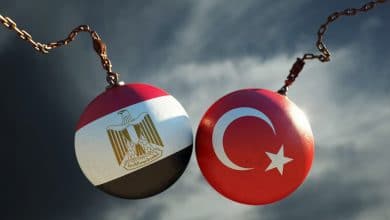
Sheikh Jarrah NBHD: Conflict’s Roots and Transformations
Sheikh Jarrah Neighborhood is a Palestinian village located on the eastern side of the city of Jerusalem, which had remained steadfast in the face of the Zionist occupation’s attempts to annex it to the 1948 occupied lands before it fell under occupation in 1967. Sheikh Jarrah neighborhood, currently one of the eastern neighborhoods of Jerusalem, was named after Prince Hossam Eddin bin Sharaf Eddin Issa Al-Jarrahi (nicknamed as Al-Jarrah), the private doctor of Salah Al-Din Al-Ayyubi (Saladin). Al-Jarrah lived in this neighborhood and remained there until he died about 900 years ago and buried there. Perhaps the name of Sheikh Jarrah Neighborhood was a major reason for the Israeli occupation’s resentment against the neighborhood and its people, and Israel’s overwhelming desire to erase it from existence. For this reason, there was and still is a Zionist settlement plan that threatens the neighborhood, as it was announced earlier, including the construction of 200 housing units to house Jewish settlers there, a dream that the usurping occupiers have long been haunted with since 1967.
History of the neighborhood
The Sheikh Jarrah Neighborhood, in its current form, was established in 1956, based on an agreement between the United Nations Relief and Works Agency for Palestine Refugees (UNRWA) and the Jordanian Ministry of Construction and Development, as the West Bank was then under the Jordanian rule (1951-1967). At the time of its foundation, the neighborhood accommodated 28 Palestinian families who had been displaced from their lands occupied by the Zionists in 1948. One of its main articles of the agreement was that residents should pay a symbolic fee, provided that ownership be transferred to them three years after completion of construction. However, the 1967 war and the loss of the Arab armies prevented completion of the process of documenting the Palestinian families’ ownership of homes there.
A history of suffering and struggle
The suffering of the population started in 1972, when a committee of the Sephardic sect (referring to the Jews who had originally lived in Spain and Portugal) together with a committee of the occupation’s Knesset – the Ashkenazi Jews Committee – (who had originally lived in Germany, France and most of Europe) claimed that they owned the land on which the homes in Sheikh Jarrah Neighborhood were built in 1885. In July 1972, the two Israeli associations asked an Israeli court to evict four families from their homes in the neighborhood under the pretext of “unlawfully violating others’ property”, as stated by the Civil Coalition for Palestinian Rights in Jerusalem (CCPRJ). At the time, the Palestinian families hired an Israeli lawyer to represent them before court. In 1976, a ruling was issued by the occupation courts in favor of the four families against whom the lawsuit was filed. The ruling stated that the four families were legally present there based on the authorities of the Jordanian government, and that they were not trespassers with respect to the land they were living on.
However, the court at the time ruled that the land belonged to the Israeli associations, according to the new registration that was made at the ‘Tabu’ (Land Registration) Department of the occupation state. In the early nineties of last century, the residents of Sheikh Jarrah Neighborhood were subjected to deception and betrayal by an Israeli lawyer that they had hired to defend them. In 1982, the Israeli settlement associations filed an eviction lawsuit against 24 families in the Sheikh Jarrah neighborhood. Some 17 families at the time assigned the Israeli lawyer Tosia Cohen to defend them, as the legal procedures continued without the settlement associations being able to prove ownership until 1991. In 1991, a deal was concluded with the attorney Cohen admitted, where he signed on behalf of the residents of the neighborhood, without their knowledge, that the ownership of the land belonged to the settlement associations; according to which residents of the neighborhood were granted the status of tenants, to whom the Tenant Protection Law applies. According to the Civil Coalition for Palestinian Rights in Jerusalem, what the lawyer’s deal put the Palestinian families “under eviction in case they did not pay the rent fees to the settlement associations”.
“The inhabitants discovered that the deal was a conspiracy that did them great harm, and confirmed the settlers’ possession of the land. As a result, the families did not pay the rent.” Meanwhile, the occupation courts continued to consider mutual cases between Sheikh Jarrah Neighborhood residents and Israeli settlement associations.
The Ottoman ‘Tabu’
Relying on the Ottoman ‘Tabu’ (property documents), brought from Turkey, Suleiman Darwish Hijazi filed a lawsuit in 1997 with the Israeli Central Court, asserting his ownership of the land on which the houses were built in Sheikh Jarrah. However, in 2005 the court rejected Hijazi’s lawsuit, considering that the documents in his possession do not prove his ownership of the land. In 2006, the Israeli Supreme Court rejected Hejazy’s appeal with respect to his ownership of the land.
In a remarkable development of events, in 2003 the settler associations sold the ownership rights to the land to the ‘Nahalat Shimon’ settlement company; where the latter, in turn, began to demand eviction of the Palestinians from their homes. Over the years, the occupation courts considered several cases filed by settlement associations against the Palestinian residents, with appeals filed by the residents against rulings issued in favor of the settlers.
In November 2008, the Kurd family was evicted from their home; and the same thing was repeated in August 2009 when the Hanoun and Ghawi families were expelled from their homes. Moreover, settlers moved to live in these houses after the owners had been expelled from them, where the Israeli flags were raised on these houses, marking a new phase of the suffering of the Palestinian residents in the neighborhood. Then, 12 Palestinian families in the Sheikh Jarrah Neighborhood received eviction rulings, issued by the Israeli occupation’s Magistrates Court and Central Court.
With the escalation of the conflict over the Sheikh Jarrah Neighborhood, another imminent disaster is looming, namely, a new settlement plan targeting several other neighborhoods, most notably an entire Jerusalem neighborhood that is facing the threat of demolition, as the occupation authorities are preparing to demolish all Palestinian homes in the Al-Bustan Neighborhood in the town of Silwan, adjacent to the Holy Aqsa Mosque in the occupied city of Jerusalem, where the forcible displacement affects about 100 homes housing some 1,550 people, mostly children and women, in the Al-Bustan Neighborhood, to establish Jewish settlement projects near the Aqsa Mosque, where the neighborhood is located 300 meters from the southern wall of the mosque, and extends on an area of 70 dunums (A dunam is a unit of area measurement in the Ottoman Empire, where one dunam at that time was equal to 919.3 square meters; but after the collapse of the Ottoman Empire, the British Mandate decided that a dunam equals 1000 square meters, which is in force to this day). This is considered a complete crime of cleansing committed by the occupation, according to the Palestinian Authority’s National Office for the Defense of the Palestinian Territory.
The Palestinian Authority had earlier stated that there are three neighborhoods in Silwan that are threatened with demolition in favor of Israeli Judaizing parks, namely: Al-Bustan Neighborhood; Wadi Al-Rababa Neighborhood, which has a population of about 1,000 people; Wadi Yasoul Neighborhood, which is inhabited by about 300 people. Also, more than 5 dunams are in danger of being confiscated under the pretext that settlers own the land, where the people are struggling in the occupation courts to preserve their property. As for the Wadi Hilweh Neighborhood, it is threatened by excavations, tunnels, and settlement outposts.
Meanwhile, the Israeli occupation authorities are preparing to establish settlement projects in the heart of Palestinian communities in occupied East Jerusalem, in order to perpetuate a policy of racial discrimination against Palestinian citizens, in coincidence with acceleration of the pace of demolitions against Palestinian homes in Jerusalem, where the occupation destroyed 148 homes, causing the displacement of 450 Palestinian citizens in various neighborhoods of Occupied Jerusalem during last year.
To Read Text in PDF Format Click here.



